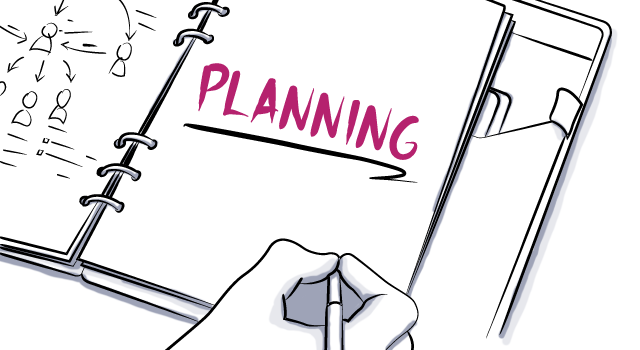
Wednesday Wisdom: 17 Event Logistics Secrets to Successful Events
The logistics of an event are the complex processes that get the people, places, and things in place for the big day (or days!). Whether it’s flying in a keynote speaker or renting tables, it’s easy to see how logistics gone awry can impact the success of an event.
Wrangling event logistics is never an easy task, whether you’re planning a non-profit gala or a large, multi-day conference. But there are ways to ensure the experience meets and exceeds attendee expectations and your client’s goals. Read on for 17 event logistics secrets to help you create streamlined events.
Before the event: Logistics that set the stage
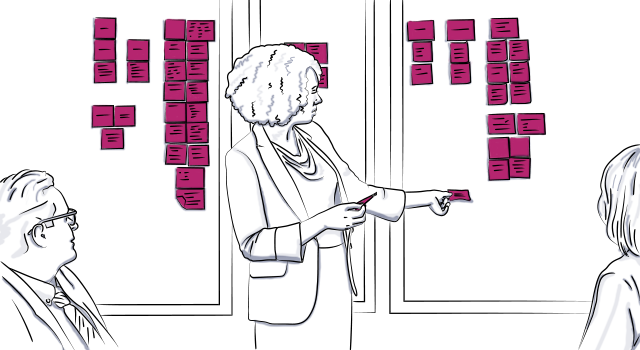
1. Clarify your event goals and your event value proposition
Your event goals are the things your business or client wants to achieve by the end of the event. It could be team building, building excitement around a new product, or raising funds for a non-profit organization.
An event value proposition focuses on the attendee experience, so that your event aligns with their top needs and interests. The EVP essentially clarifies the goals of your guests, whether they want to enjoy the headlining acoustic band, learn something new, or meet interesting peers in their industry.
All decisions, including logistics, should flow from these goals. Ways in which your event goals and EVP can help guide your logistics choices:
- If your event goal is hands-on time with a new product, you’ll make sure your the temporary stage vendor provides multiple stairways and ramps to facilitate crowd flow.
- For a large event featuring a string quartet, logistics should involve the setup of a sound system that allows every guest to enjoy the music at a comfortable decibel.
- For a college symposium that starts with seminars in one building and is followed by a reception across campus, logistics will involve golf carts for people with mobility issues and older guests.
2. Create an event planning timeline
Keep your event logistic requirements on track with a detailed event planning timeline. This timeline should include key dates and tasks, from early planning meetings to venue research to contracting with vendors, such as furniture rental companies and catering companies. Share the timeline with your team and have them add tasks to ensure nothing is skipped.
3. Consider logistics in your venue choice
For obvious reasons, logistics depend heavily on location. Examples of when event logistics should influence venue sourcing:
- 50th wedding anniversary “ Many of the guests will likely be older. Choose a facility that doesn’t require much stair climbing.
- Large-scale outdoor event “ The venue may have a beautiful expanse of land, but look for another location if the local roadways can’t manage the traffic.
- Company team-building weekend “ The hotel and event rooms are a distance from regional tourist attractions. Choose a closer venue or organize bus outings for employees.
4. Assign team members to key logistics tasks
Every member of your team should have logistics assignments. Some critical logistics tasks:
- Check venue door measurements to ensure vendors can get inside.
- Rent rope barriers for check-in guest flow.
- Scout the ideal locations for event signage.
- Clarify delivery door protocols with the venue.
- Create a car traffic management plan and train attendants.
- Double-check ADA compliance and accessibility.
- Confirm travel arrangements for guest speakers and VIPs.
If you’re a one-person operation, use your event planning checklist and calendar to make sure you hit all the key logistics touchpoints.
5. Spend time creating clear signage
Without clear signage in the right locations, guests can get confused at events and even cause delays in celebrations, performances, or meetings. At difficult to find venues, post signs on roadways leading to the property. Also use outdoor signs to guide guests to parking lots and the event entrance. Inside, create clear signs that direct attendees everywhere they need to go during the event, including the check-in desk, bathrooms, meeting spaces, presenter booths, and the ballroom.
6. Clarify logistics expectations with every vendor
Each venue will have its own logistics routine. There may be set equipment loading and unloading times, requirements to use moving blankets to prevent wall scuffs, temporary ramps for large equipment, and more. Though many vendors will already be familiar with the venue or do the research themselves, don’t leave this to chance. Find out the venue expectations and rules for every stage of the event”and pass this information on to your vendors.
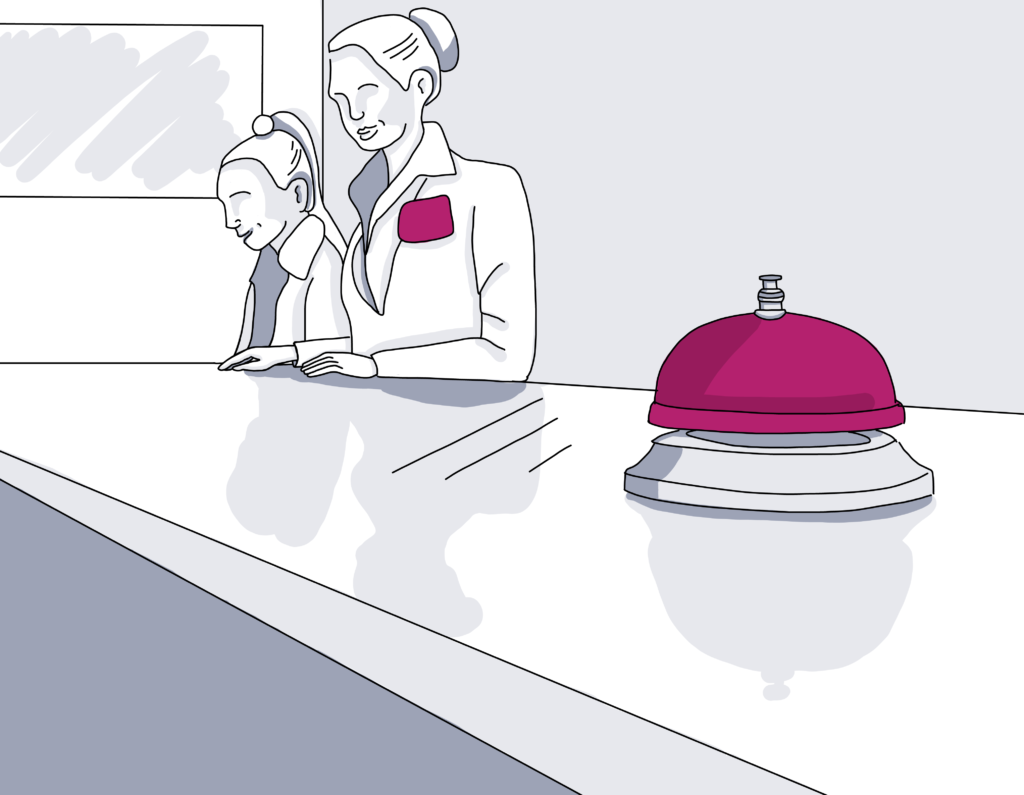
7. Customer service training
Everyone on your team should be able to manage attendee complaints, confusion, and even frustration. The ability to handle these situations with patience can prevent event log-jams during check-in and at any point during the event.
Rare quiet moments are a good time to work on customer service training. Practice greeting and guiding guests and roll play how your team will manage common problems, such as angry attendees or a late start to a panel discussion.
8. Read reviews of vendors
You can find reviews for most companies in online review forums. Sites to check include Google Reviews, Yelp, Business.com, TrustPilot, Angie’s List, and The Better Business Bureau. Best practices for reading reviews:
- Check the number of reviews; a larger number is more informative.
- Check as many sites as you can; it’s telling if the number of stars or negative reviews is consistent across sites.
- For larger companies, check employee review sites like LinkedIn or Glassdoor”these can illuminate chronic internal problems.
- Read the reviews, don’t just look at the stars. You may find tidbits that matter to you, both positive and negative. Here you’ll uncover the small company that checks-in regularly in the lead-up to the event day, or a large company that doesn’t seem to staff adequately.
9. Event space walkthroughs
If you’re planning an event at a new venue, you or a team member should see the property first-hand. Things to look out for during your walkthrough:
- Disorganized valet parking. You may need to hire an outside vendor.
- ADA compliance. If there are many guests with disabilities and only one a single-rider handicapped elevator, a temporary ramp can help attendees enjoy the event faster.
- Are there adequate power sources for A/V setup in every event room.
- WiFi and cell service. Is it powerful enough for the event’s needs? You’ll need flawless connections if your event includes instant audience polling or live streaming.
- Sightlines and throughways. Double-check that attendees can move freely in every space and that emergency exits are clear.
10. Create a day-of communication plan.
This must be established beforehand, or it’ll be chaos on event day. Establish the chain of command among team members, clarifying the types of problems that should be handled on the spot, whenever possible, and those that require event manager involvement.
Have multiple communication tools, such as walkie-talkies, cell-phones, and even hand signals. You should have secondary options in case there are issues with one mode of communication, such as a sudden slow-down in cell service.
Pre-event logistics tools you need:
1. Automated to-do reminders. Set alerts within your event planning software to remind you of essential logistics tasks, such as signing final contracts with the tent company and reviewing venue bump in and bump out rules with vendors.
2. Shareable event planning tool. Keep the entire team on the same page whenever necessary. You can share the most up-to-date event layout, essential contacts, and the guest list.
3. Event diagramming tool. An event layout tool helps you plan your event flow and the location of elements that impact logistics, such as podiums, temporary stages, and buffet tables. Social Tables layout tool lets you switch to a 3D view so you can conduct a virtual walkthrough and spot sightline and crowd flow issues.
Day of the event: Streamlined logistics when it’s showtime

11. Coordinate ˜bump in’ with multiple vendors
Make the most of your event team’s time by overlapping vendor arrivals”which you’ll already have established. But a team member should be assigned to ensure vendors understand the best routes for equipment and supplies. This person will be the go-between who lets the A/V vendor know when the temporary stage is ready for them to rig up the sound system.
12. Schedule time for a run-through
Things can easily slip through the cracks on event day, so include a run-through of the event two hours before start-time. Depending on the size of the event this can be handled by one trusted team member or several. Things to check before go-live:
- Microphones. Are they working? Is the volume correct?
- Video. Play planned slide presentations and videos to make sure they are ready to go.
- WiFi and cell service. Can people log in and share event hashtags with ease?
- Set up the ˜green room’ for speakers. Make sure the bottled water and a few light snacks are available for presenters.
- Sightlines and audio. Make sure people can see and hear, even from the back.
- Trip hazards. Walkthrough looking specifically for cords that should be taped down and temporary carpets that need smoothing.
13. Assign a specific team member to a troubleshooting role
Things will go wrong. A burner not lighting in the kitchen? This could slow down dinner service. A passable audience microphone out of commission? This undermines planned Q&A sessions. A broken chair at the panel discussion table? This needs switching out before VIPs arrive.
With a team member on troubleshooting duty, and at the ready with their walkie talkie or cell phone, these issues are resolved before minor hiccups become major problems.
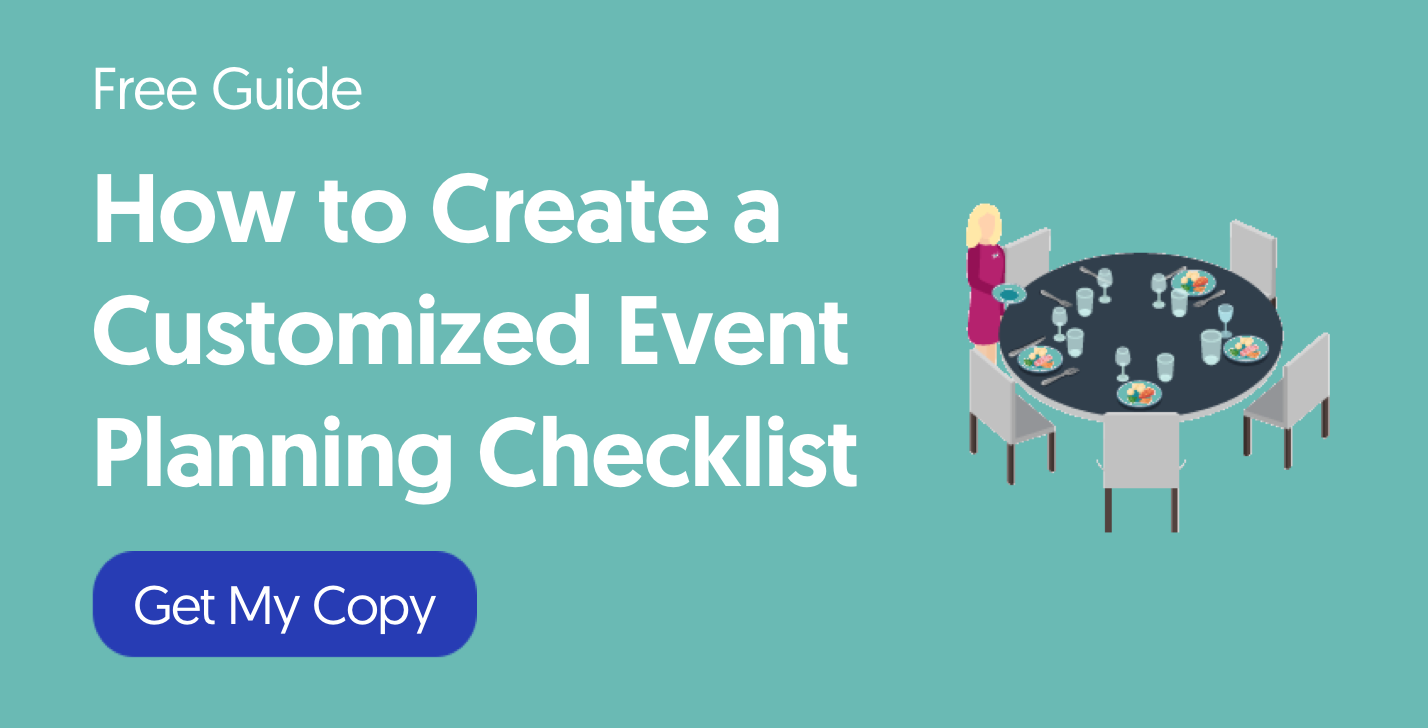
14. Make sure team members are recognizable to attendees
Everyone working the event should be recognizable to attendees. The event style will guide how you make your team recognizable. For conferences and company meetings, brightly colored branded T-shirts are an excellent way to stand out. At formal events, dark suits or dresses with an understated nametag is a good idea.
Security should also stand out, with either bright T-shirts that with ˜security’ spelled out, or uniforms.
Helpful day-of-event logistics tools
1. Guest check-in software. Keep attendee arrival moving at a brisk pace, and identify the arrival of your event VIPs with guest check-in software.
2. Meal management tools for special dietary restrictions. Today, people have more dietary restrictions and special diets than ever before. Social Tables and other event software programs include options to indicate which guests have special dietary needs, and exactly where they are sitting.
3. Communication devices. As mentioned above, your team needs a way to communicate especially at large-scale events across large venues or in multiple locations. Walkie talkies are the top choice because they don’t depend on cell service, which can drop on occasion.
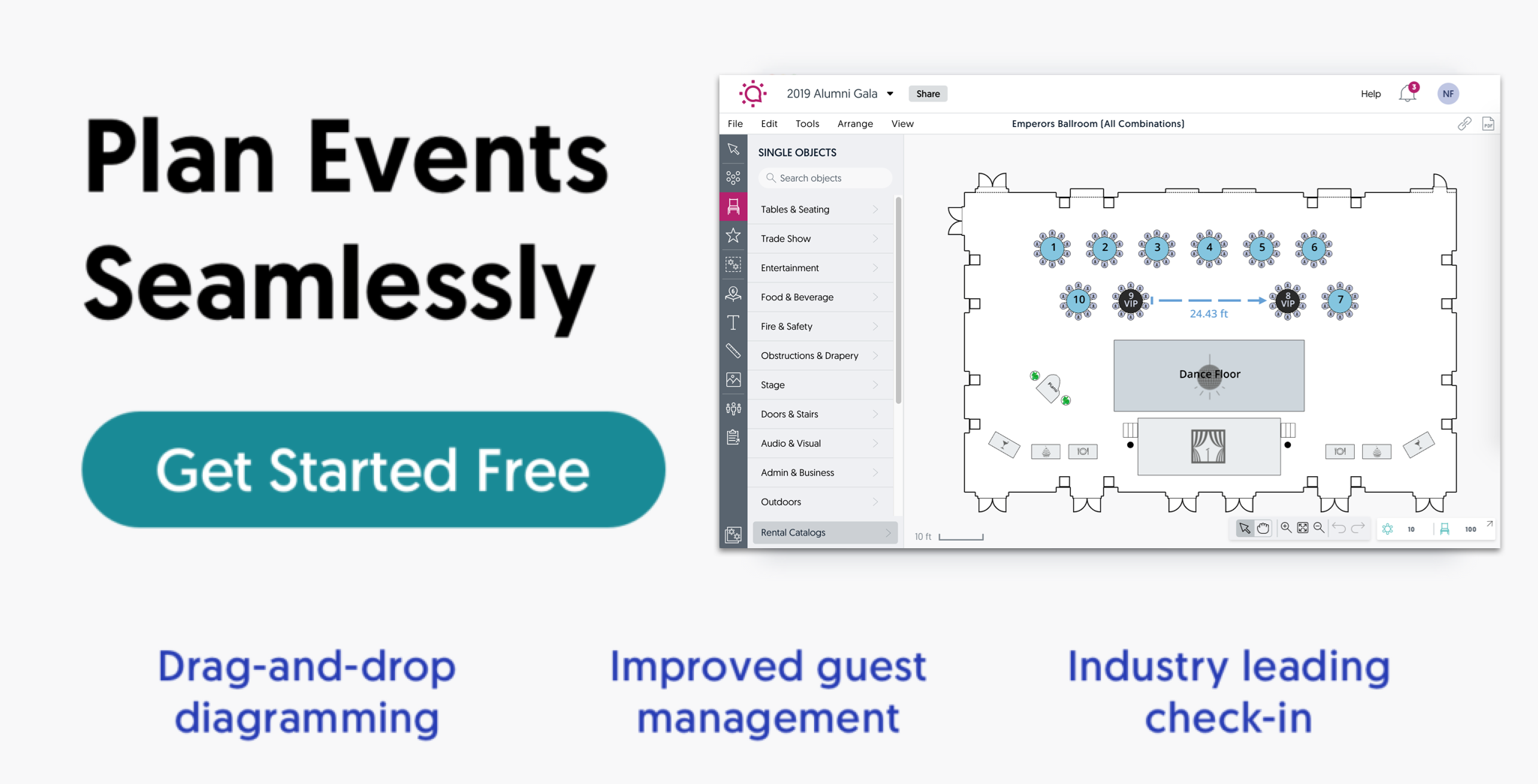
Post-event: The logistics after the guests are gone
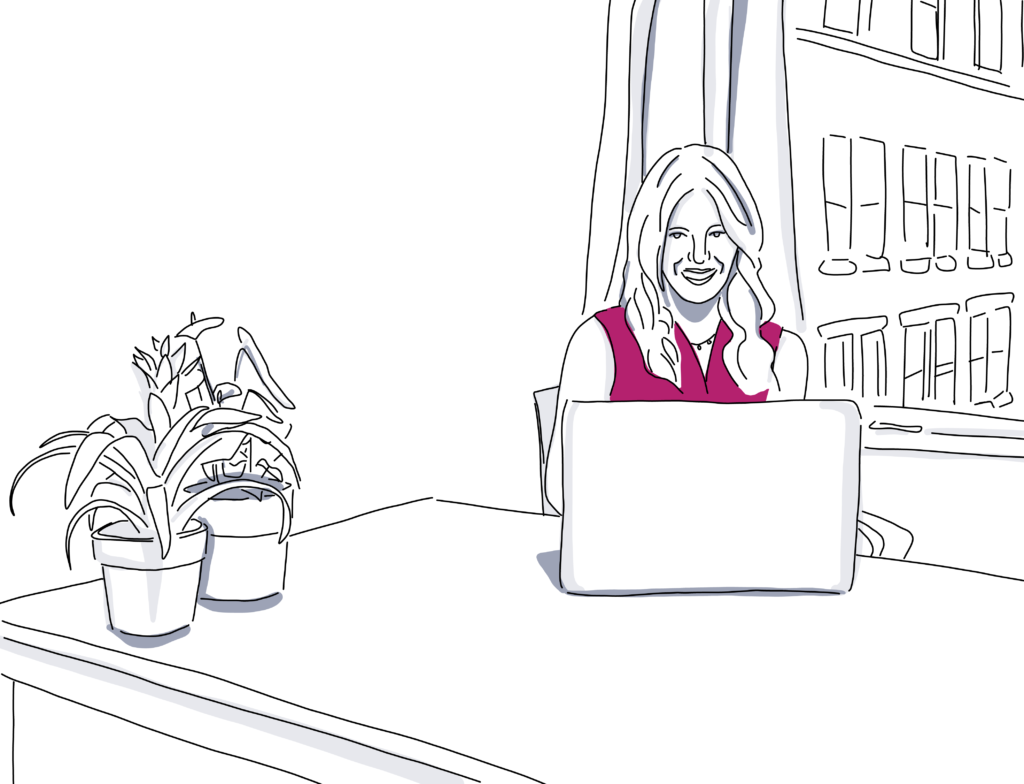
15. Schedule bump out, too
Just like you, most vendors don’t like to waste time. But they’ll need to give each other room to work as they bump out of the venue. Find out in advance how long the process takes each vendor. Before the event, let each vendor know the loading dock or doorway they should use during bump out, and let the venue manager know so they can assign someone to operate the lifts.
Simple requests can help. For example, ask the catering company to clean and pack up their gear completely before moving it outside to give the table rental company time to clear out the dining room quickly.
16. Remain on-site until the last vendor has left
The behavior of your vendors reflects on your event planning business. You or a team-member should oversee the bump out so it moves along at a reasonable pace and is done with care. Things like leaving messes and stains, or not putting things back in their place is disrespectful and should be corrected. When the work of vendors is exceptional, express your appreciation. A final walkthrough after the event with the venue manager is a good practice, so you spot issues immediately.
17. Conduct a post-event debrief and attendee surveys
It’s all too easy to charge onto the next event without taking a breather. But take time to discuss the pros and cons of the event with your team members while it’s still fresh. Also, communicate with your vendors to see if they noticed things you did not.
Post-event surveys provide overall guest impressions of the event, from where it exceeded their expectations to where it fell short. Use event survey apps, such as SurveyMonkey or Wufoo, to build simple, brief surveys. Questions to ask include:
- Did you enjoy the event?
- Was the event what you expected?
- Did you learn things you’ll remember?
- Did you like the food?
- Did you know where to go next throughout the event?
The combination of post-event debriefs with your staff and guest surveys should highlight problem areas. Use these insights to make changes at future events. Slow lines at the swag table, for example, may prompt a shift in your check-in table layout. Attendee confusion at a conference may suggest the need for another concierge at similarly sized events.
Helpful post-event logistics tools:
1. Post-event survey apps. These apps make it easy to understand the guest experience through surveys. Discover how to get the most helpful, actionable information out of your post-event surveys.
2. Event planning notes. Use your event planning software to store information about the logistic choices that worked best for different types of events.
3. Store diagrams and contacts for future use. Save event layout diagrams in your planning software, and keep a list of the logistics partners who always improve event flow. When planning similar events, you can use the layouts as a starting point and reach out to top-tier vendors immediately.
Logistical bumps are unavoidable, but incorporating smart strategies into your event planning process keeps them at a minimum”and helps you manage problems when they pop up.
Now You’re Ready to Get Event Logistics Right!
Ready to get a virtual overview of logistics issues at every venue you work with? Request a demo of Social Tables’ event planning software. Up next, learn the most common challenges event planners face”and how to solve them.

